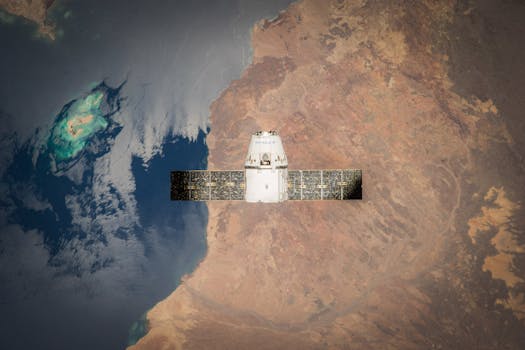
Orbiting Innovations: Exploring the Latest in Earth-Observing Technology
Orbiting Innovations: Exploring the Latest in Earth-Observing Technology has revolutionized the way we understand our planet. With the help of satellite imaging and remote sensing, scientists and researchers can now gather vast amounts of data about the Earth’s surface, atmosphere, and oceans. This technology has numerous applications, ranging from environmental monitoring and natural resource management to disaster response and urban planning.
History of Earth-Observing Technology
The concept of Earth-observing technology dates back to the 1960s, when the first weather satellites were launched. Since then, the technology has evolved significantly, with advances in sensor design, data processing, and satellite platforms. Today, there are numerous Earth-observing satellites in orbit, providing a wide range of data products and services. The Landsat program, launched by NASA in 1972, is one of the most iconic and influential Earth-observing programs. The Landsat satellites have been continuously collecting data on the Earth’s surface, providing valuable insights into land use, land cover, and environmental changes.
Applications of Earth-Observing Technology
Earth-observing technology has numerous practical applications. In the field of environmental monitoring, satellite data is used to track deforestation, monitor water quality, and detect natural disasters such as wildfires and hurricanes. Remote sensing is also used in agriculture to optimize crop yields, predict soil moisture, and detect pest infestations. Urban planners use Earth-observing data to monitor urban growth, track population movements, and optimize infrastructure development. The technology is also used in disaster response, providing critical information on damage assessment, evacuation routes, and emergency response planning.
Recent Advancements and Future Directions
Recent advancements in Earth-observing technology include the development of small satellites, also known as CubeSats. These tiny satellites are relatively inexpensive to launch and can be designed to perform specific tasks, such as monitoring ocean currents or tracking atmospheric conditions. Another area of research is the development of synthetic aperture radar (SAR) technology, which can penetrate clouds and darkness, providing high-resolution images of the Earth’s surface. As the field continues to evolve, we can expect to see even more innovative applications of Earth-observing technology, from monitoring climate change to optimizing global food production.
In conclusion, Orbiting Innovations: Exploring the Latest in Earth-Observing Technology is a rapidly evolving field that has transformed our understanding of the planet. With its numerous applications and continuous advancements, Earth-observing technology is poised to play an increasingly important role in addressing global challenges and promoting sustainable development.



